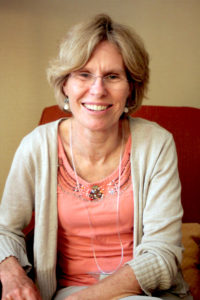 Michele Champion, M.Ed., Special Education, CdLS Foundation Professional Development Committee
Michele Champion, M.Ed., Special Education, CdLS Foundation Professional Development Committee
I recently had the opportunity to attend an ASHA (American Speech-Language-Hearing Association) Convention in Boston. ASHA is the national association for members and affiliates who are audiologists; speech-language pathologists; speech, language, and hearing scientists; audiology and speech-language pathology support personnel; and students. Audiologists specialize in preventing and assessing hearing and balance disorders as well as providing audio logic treatment, including hearing aids. Speech-language pathologists identify, assess and treat speech and language problems, including swallowing disorders.
The ASHA Convention is one of the largest professional development events for speech-language pathologists, audiologists and speech, language and hearing scientists. Bringing together approximately 15,000 attendees, for three days, the Annual Convention offers more than 2,500 sessions eligible for ASHA continuing education credit covering the latest research, clinical skills and techniques in communication sciences and disorders.
There was an abundance of choices at the convention. There were topics and interests for everyone’s professional interests, goals and challenges, The ASHA Convention included exhibits, presentations on research and short courses presented by special interest groups.
Sessions were divided by topics areas:
• Audiology Professional Practices
• Speech-Language Pathology Professional Practices
• Professional Development
• Office of Multicultural Affairs
• Government Relations and Public Policy
I attended a session on research designing ACC (Augmentative and Alternative Communication) technologies to fit into family life. Important key items were:
• Technology should be modified to fit the skills and needs of the child
• The technology must be something that the child is able to use
• Children are part of the family system therefore the family needs to learn how to use ACC technology and integration into family life.
First the family’s goals should be identified. Do they want the device used at home and school, with family members and friends? Goals can and do change over time. Some suggestions for integrating ACC technology into family life are to use it for family activities, such as shopping trips or visiting relatives. Another suggestion is to form relationships with other families for support. Children can communicate with each other. As with any ACC technology there are challenges and realities. The ACC technology may not be always available: not working or left at school. There is always a learning curve on how to use the technology. It is important to remember that ACC technology has the ability to support a child’s participation in family goals and everyday life.
Many children with CdLS enjoy music and this session caught my eye: Collaboration of Speech-language therapists and music therapists. Music therapy is using music interventions to accomplish individual goals within a therapeutic relationship. The research presented demonstrated that music can facilitate speech production, increase engagement with others and improve communication for the nonverbal population. Some challenges of music therapy are finding age appropriate music activities, having a SLP comfortable with music and to consider the individuals’ sensory development to ensure music does not cause sensory overload.
The next convention is in Orlando, Florida, November 2019. If you have a chance to attend I highly recommend it, you will leave with new information whether you are a professional, a family member or caregiver of an individual with CdLS.
Recent Comments